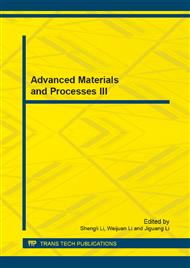p.667
p.672
p.678
p.686
p.691
p.699
p.703
p.708
p.712
Bioinformatic Analysis of rbcL Gene in Lilium
Abstract:
Used sequence diversity of chloroplast rbcL gene sequence to analyze Lilium phylogeny, structured model of the rbcL protein secondary structure and tertiary structure form Lilium superbum. There were 26 variable sites and 12 parsimony-informative sites by analyzing 1378bp rbcL sequences of 17 Lilium species. The main nucleotide variable type was base transversion. The main variable region form 560bp to 852bp and form1200bp to1371bp. Structured phylogeny tree with N-J method, four types of the 17 Lilium species were clustered, respectively Asian hybrid group, American hybrid group (two branches), and longiflorum hybrids group. Longiflorum hybrid system (nine Lilium species ) was divided into four sub-categories. Structured protein secondary structure of rbcL protein of Lilium superbum, there were 18 alpha helixes, 17 beta sheets and some turn angles. The hydrophobic analysis was hydrophilic protein. 3D model was structured by homology comparative SWISS-Model online. The scores of most amino acid residues in the 3D conformation of the rbcL protein were positive and within are asonable range.
Info:
Periodical:
Pages:
691-696
Citation:
Online since:
September 2013
Authors:
Keywords:
Price:
Сopyright:
© 2013 Trans Tech Publications Ltd. All Rights Reserved
Share:
Citation:


